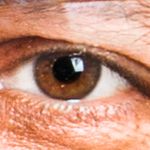 Adobe Community
Adobe Community
Copy link to clipboard
Copied
I'm a collaborator and I work with photos of free-living animals in nature. No manipulation of the animal or photos in captivity. I had some photos rejected for graininess. I didn't understand the reason for the rejection since it didn't change the quality of the image. All images have grain, this is natural. I suggest you review this image screening policy, I've recently been receiving information from you about images created with AI. I've never worked with aI and I don't even know how to use it. I don't even use Photoshop. I only use Lightroom to adjust the light sometimes. Review your policy at screening time. Certainly whoever does this has never worked in an open environment. I don't work in a studio with a controlled environment. Thanks
 4 Correct answers
4 Correct answers
Hello,
Sorry, but free-living animals have nothing to do with grain or in a digital file - noise; it's to do with the camera sensor. The higher ISO, the more noise you get. (It's like with film, the faster the film, the more grain there is, or rather silver halide crystals.) So, the image screening policy is just fine, actually. There is nothing to review!
I would suggest you read about noise in a digital file!
How to reduce noise in photos (adobe.com)
"I work with photos of free-living animals in nature. No manipulation of the animal " This is great! But of no relevance to Adobe Stock. The photos must be technically perfect however they are captured.
"All images have grain, this is natural."
Some have excessive grain. Some indeed have no noticeable grain. Grain was an unavoidable property of film, sure.
" I've recently been receiving information from you about images created with AI. "
Just ignore it.
"Certainly whoever does this has never worke
...As far as I know, there is no rejection specific for "graininess". The rejection is "quality issues" which can be almost anything.
Noise does effect the quality of your image. Especially, if blown up to wall canvas size.
Wildlife photography is often done with low light and fast shutter speeds. This increases your ISO which increases your noise. Especially, in shadow areas. Almost all photos need noise reduction.
If you use Lightroom, take advatage of the Details Slider. The new version of Light
...I have posted many images of animals in nature, and always edit them in Lightroom Classic to correct any technical issues prior to submitting to Adobe Stock. Excessive noise is easy to correct, as demonstrated by @RALPH_L above. If you believe your image was rejected because of noise try the new Denoise feature in LRC, and then resubmit your image. You could also post that image here for the Comunity members to take a look and provide our opinions as to why it was rejected.
Copy link to clipboard
Copied
Hello,
Sorry, but free-living animals have nothing to do with grain or in a digital file - noise; it's to do with the camera sensor. The higher ISO, the more noise you get. (It's like with film, the faster the film, the more grain there is, or rather silver halide crystals.) So, the image screening policy is just fine, actually. There is nothing to review!
I would suggest you read about noise in a digital file!
How to reduce noise in photos (adobe.com)
Copy link to clipboard
Copied
"I work with photos of free-living animals in nature. No manipulation of the animal " This is great! But of no relevance to Adobe Stock. The photos must be technically perfect however they are captured.
"All images have grain, this is natural."
Some have excessive grain. Some indeed have no noticeable grain. Grain was an unavoidable property of film, sure.
" I've recently been receiving information from you about images created with AI. "
Just ignore it.
"Certainly whoever does this has never worked in an open environment."
No allowance WHATEVER is made for your environment. If you have managed to take the only known picture of an animal that was believed extinct, in a unique and exciting setting, it will be reviewed the same as all other pictures, and rejected if it is out of focus or has other faults.
"I don't work in a studio with a controlled environment."
This makes the challenge interesting, but you cannot demand special treatment on this account.
Copy link to clipboard
Copied
As far as I know, there is no rejection specific for "graininess". The rejection is "quality issues" which can be almost anything.
Noise does effect the quality of your image. Especially, if blown up to wall canvas size.
Wildlife photography is often done with low light and fast shutter speeds. This increases your ISO which increases your noise. Especially, in shadow areas. Almost all photos need noise reduction.
If you use Lightroom, take advatage of the Details Slider. The new version of Lightroom CC offers AI assisted noise reduction.
Here an example:



Copy link to clipboard
Copied
And by the way, as I reread your message, I think you may have a fundamental misunderstanding of the role of this forum. You write " I suggest you review this image screening policy," but we have no power to do this. The people answering questions in this forum are other contributors, who are willing to share their time to help people learn what is needed to get their photos accepted. The people answering questions have no power to change any policies. You are NOT talking to Adobe. (How do you talk to Adobe about your pictures? You don't. There is no appeal or discussion because it would increase the cost of building the stock photo library).
Copy link to clipboard
Copied
I have posted many images of animals in nature, and always edit them in Lightroom Classic to correct any technical issues prior to submitting to Adobe Stock. Excessive noise is easy to correct, as demonstrated by @RALPH_L above. If you believe your image was rejected because of noise try the new Denoise feature in LRC, and then resubmit your image. You could also post that image here for the Comunity members to take a look and provide our opinions as to why it was rejected.
Copy link to clipboard
Copied
My understanding from my training is that grains are not normal, but comes about based on the camera's internal activity such as vibration. The camera is designed to capture objects and space around us as is. Except for dust we do not see grains, which means a perfect photo should not have grains.
Photo editors are designed to compensate for the inability to avoid grains while shooting. Therefore, we are expected to apply post processing to our photos. You should be using your photo editor to remove grains from your photos.
Here is a list of issues that you should be checking for that you need to zoom in on your files to correct.
You will also benefit from the common reasons for rejections and the tips to get you photos accepted by Adobe.
AI Info
All of us get the banner at the top of our contributor page. Use the "X" to close it out if it does not apply to you.
Use Community
Also please note that the people that monitor the fora are not Adobe staff members. We are all volunteers.
Review time
I agree, the review time has become a sore point. A restriction policy for the AI floods might mitigate the delay. Unfortunately we cannot do anything about it except to go with the flow. Adobe and the AI contributors need to work that out. It is just unfortunate that it is spilling over on us who do not submit that format.
Best wishes
Jacquelin
Copy link to clipboard
Copied
My understanding from my training is that grains are not normal, but comes about based on the camera's internal activity such as vibration.
By @jacquelingphoto2017
OP confounds noise with grain. Grain is a physical property of the film that we used in the good old film days. Noise is what you get from your camera's sensor, and each sensor produces noise. When we are talking about is noise, it's noise that gets visible. Programs are currently excellent at compensating that noise based on profound knowledge of the behaviour of the sensor (each sensor has a different noise reaction) in relation with the ISO parameter of the camera.
The ISO parameter in digital cameras is not a modification of the sensor's sensitivity to light, but it is an electronic amplification of the signal that the sensor captures. With that amplification, all signals get amplified, also the unwanted noise. At some point, the light hitting the sensor produces a signal that is only a small multiple of the standard noise of the sensor. That is the case, when you apply really high ISO values because of the low light.
So, noise is a natural present, but mostly unwanted phenomena, that needs to be compensated. In high noise areas, you need to manually tweak the noise correction because noise correction also optimizes away small details in images, like a fur texture. A good image editor (the person doing the work) compensates different areas of the image differently.
As soon as you get a result that looks like a perfect image, you have done a good job. It's a bad job, taking the image out of the camera and not tweaking the parameters.
Copy link to clipboard
Copied
As a budget conscious student back in the day, Kodak's 25 ISO B&W was my go to film. It had noticeable granularity due to the presence of small silver particles on the emulsion. But the images it produced contained high contrast with good details.
The pricier high speed color film of the day had no granularity but noise level was off the charts.
Photography (film & digital) is all about trade-offs. You never get something for nothing.
Alt-Web Design & Publishing ~ Web : Print : Graphics : Media
Copy link to clipboard
Copied
Watch this video. It's right up your alley. 🙂
How to get clean images from high ISO photos -
Alt-Web Design & Publishing ~ Web : Print : Graphics : Media
Copy link to clipboard
Copied
This is not the National Geographic, where any image manipulation is prohibited. What you need to submit to stock are correctly edited pictures, with as fewer defects as you can get. Images need to be perfectly clean, and when the deer is in the wrong corner, you have to put it in the right corner. Adobe won't adapt their quality requirements, if you cannot submit for the required quality, you have to stop submitting.
The customers for stock are mostly advertisers and other professionals, who use your pictures to speed up their work, not to have a need to correct your pictures.




